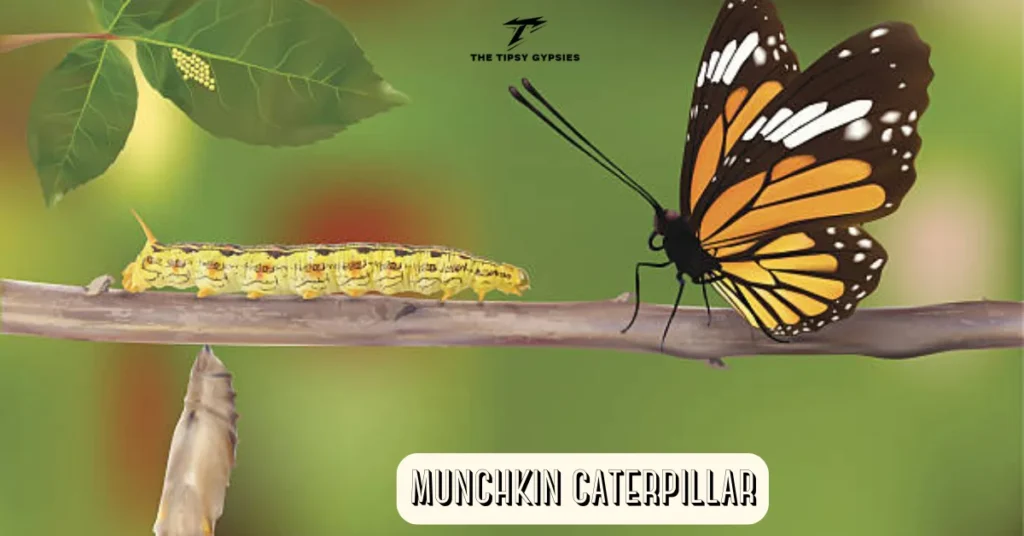Introduction to the Munchkin Caterpillar
Meet the munchkin caterpillar, a tiny creature that packs a powerful punch in the world of garden ecology. While it may be small enough to fit on your fingertip, this charming larva plays an essential role in maintaining a healthy and vibrant garden ecosystem. Gardeners often overlook these little wonders, but the presence of munchkin caterpillars can signify life and balance among plants. Whether you’re an experienced gardener or just starting out, understanding their significance might inspire you to embrace these miniature marvels as allies in your green sanctuary. Let’s dive into what makes munchkin caterpillars so mighty!
Discover a Related Read That Complements What You Just Learned!
The Role of Munchkin Caterpillars in Garden Ecology
Munchkin caterpillars play a vital role in garden ecology, acting as both herbivores and prey. These small creatures contribute to the complex food web within your backyard.
By munching on leaves, they help regulate plant growth. This feeding behavior encourages new foliage development, promoting biodiversity among various plant species. Healthy plants support a wide array of beneficial insects and wildlife.
As these caterpillars transition into butterflies, they become critical pollinators. Their presence enhances floral diversity and encourages fruit and seed production.
Additionally, munchkin caterpillars serve as an essential food source for birds and other predators. This keeps populations balanced in the ecosystem while contributing to nutrient cycling through their waste.
Understanding their ecological impact can shift perceptions about these tiny creatures from mere pests to key players in maintaining garden health.
Benefits of Having Munchkin Caterpillars in Your Garden
Munchkin caterpillars bring a delightful charm to any garden. Their tiny size makes them adorable, but their impact on the ecosystem is anything but small.
These little creatures play a vital role in maintaining the balance of local biodiversity. They serve as a food source for various birds and other wildlife, promoting healthy populations in your backyard.
In addition, munchkin caterpillars help with soil health. As they munch on leaves, they contribute to nutrient cycling. This not only benefits plants but enriches the ground beneath them.
Having these caterpillars around can also attract beneficial insects like ladybugs and lacewings. These allies further aid in pest control while enhancing pollination efforts within your garden.
By supporting munchkin caterpillar habitats, you’re fostering an environment where nature thrives harmoniously. Gardening becomes more than just planting; it evolves into nurturing an entire ecosystem filled with life and wonder.
Explore More Ideas That Could Spark Your Next Big Move
How to Attract Munchkin Caterpillars to Your Garden?
To invite munchkin caterpillars into your garden, start by cultivating a diverse plant palette. These tiny creatures thrive on specific host plants. Consider planting dill, parsley, or fennel to create an inviting habitat.
Next, maintain a chemical-free environment. Pesticides and herbicides can deter these beneficial insects. Embrace organic practices to keep them safe.
Adding native flowering plants will not only attract munchkin caterpillars but also their adult counterparts—the butterflies. Bright blooms provide essential nectar sources.
Consider incorporating moisture-rich areas in your garden as well. Munchkin caterpillars benefit from humidity and shelter among leaves or underbrush.
Patience is key! Create the right conditions and give nature time to flourish while you wait for these small yet mighty visitors to make their appearance in your space.
Common Misconceptions about Munchkin Caterpillars
Munchkin caterpillars often get a bad rap in the gardening community. Many people mistakenly believe they are harmful pests that destroy plants. In reality, these tiny creatures play a vital role in our ecosystems.
Another common misconception is that munchkin caterpillars only feed on specific plants, limiting their presence. While they do have preferences, they thrive on various foliage. This versatility makes them more beneficial than many think.
Some gardeners fear that munchkin caterpillars will overpopulate and wreak havoc on their gardens. However, nature regulates their numbers effectively through natural predators and environmental factors.
There’s confusion regarding metamorphosis stages. People assume all caterpillars transform into butterflies or moths like larger species do. Munchkins also contribute to this beautiful cycle but may go unnoticed due to their size and subtlety. Understanding these facts can help foster appreciation for these small yet mighty insects in garden ecology.
Dealing with Potential Pest Control Issues
While munchkin caterpillars are generally beneficial, concerns about pest control can arise. It’s important to recognize their role before jumping to conclusions.
If you notice munchkin caterpillars on your plants, assess the situation first. A few caterpillars usually won’t cause significant harm. They often coexist with other insects that keep ecosystems balanced.
For larger infestations, consider natural solutions like introducing predators or using organic insecticides. Ladybugs and lacewings can help manage numbers without harming the environment.
Regular monitoring is key in maintaining a healthy garden ecosystem. Keeping an eye on plant health allows for early intervention if necessary.
Always research any treatments thoroughly to avoid unintended effects on your munchkin friends and other beneficial species nearby. Emphasizing harmony over eradication fosters a thriving garden space where all creatures contribute positively.
Conclusion: Embracing the Mighty Munchkin Caterpillar in Your Garden
Embracing the munchkin caterpillar in your garden is not just about appreciating its small size; it’s about recognizing its significant role within the ecosystem. These tiny creatures contribute to pollination and serve as food for various birds and beneficial insects. By fostering an environment that welcomes munchkin caterpillars, you can enhance biodiversity in your garden while also creating a vibrant habitat.
Attracting these fascinating little beings requires some simple adjustments to your gardening practices. Planting native species and avoiding harmful pesticides will encourage their presence. The benefits they bring—like natural pest control and improved soil health—should not be underestimated.
It’s essential to dispel common misconceptions surrounding munchkin caterpillars, particularly those related to potential damage to plants. Understanding their place in the broader ecological picture helps gardeners appreciate them rather than view them as mere pests.
When managing any possible pest issues, consider using organic solutions that won’t disrupt the delicate balance of your garden’s ecosystem.
By fostering a welcoming environment for munchkin caterpillars, you invite resilience into your gardening efforts. These mighty little champions of nature play a crucial role that extends beyond their modest appearance. Your garden can thrive with their help, making it both beautiful and ecologically sound.
Don’t Miss This Featured Post Everyone’s Talking About






